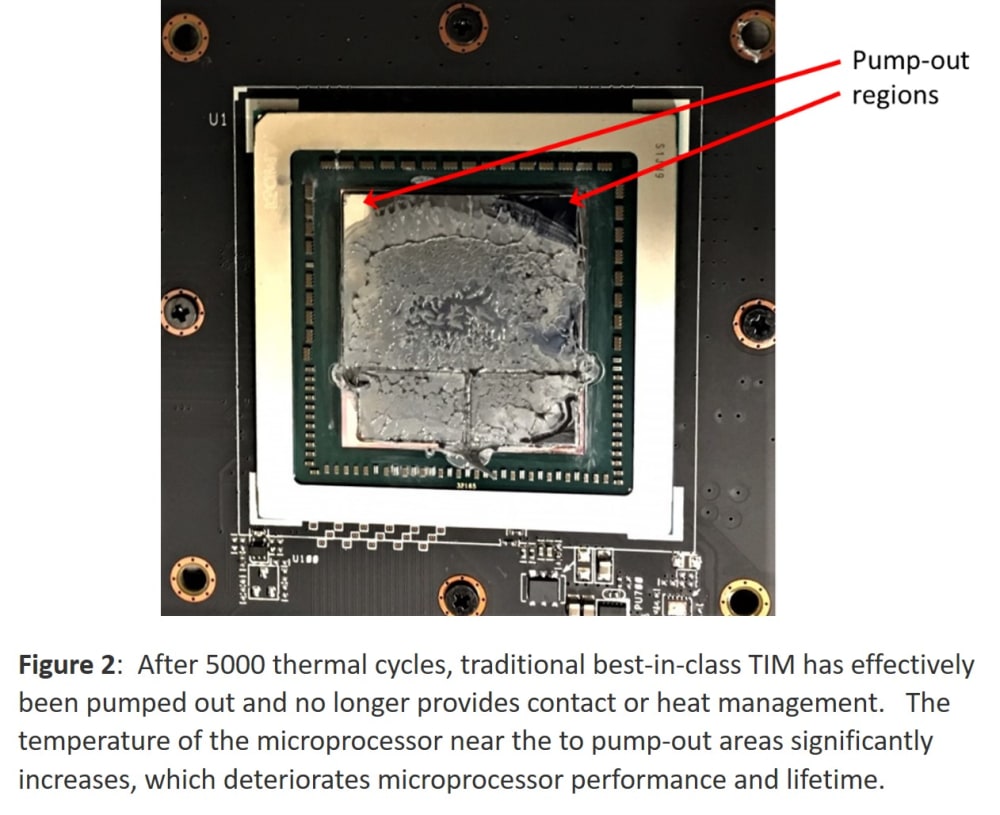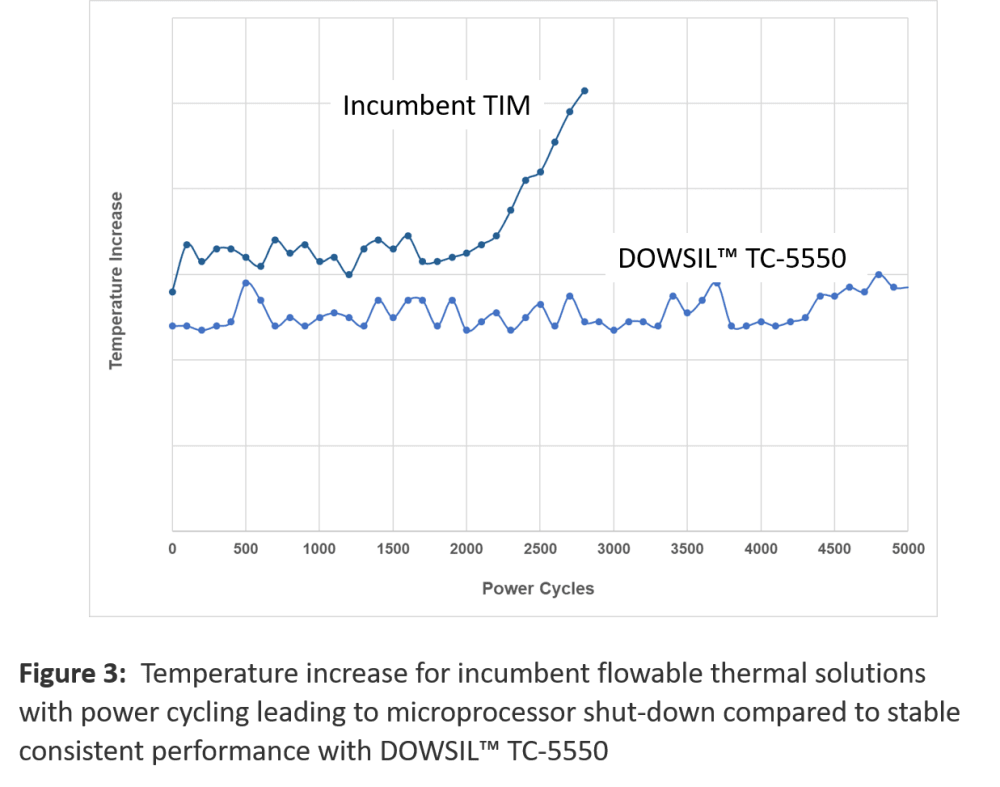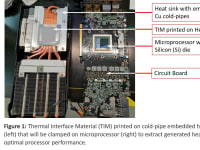
Innovation: DOWSIL™ TC-5550 is a novel Thermal Interface Material (TIM) that manages heat in mission-critical microprocessors, enabling more compact designs, longer device lifetimes, faster speeds, and fewer catastrophic failures. The future will be defined by high power microprocessors for advances in Artificial Intelligence, Internet of Things, 5G communications and cloud computing. These advances across smart homes, factories and cities will manipulate vast amounts of data. Just as one example, a single autonomous cloud connected vehicle will process ~50TB of data daily akin to earlier generation servers. Performance advantages of next generation, higher power microprocessors can be met only if generated heat is effectively managed. Heat severely compromises the speed and lifetime of electronic components and the need for heat removal in microprocessors cannot be overstated.
Novelty: DOWSIL™ TC-5550 uniquely combines material attributes that are traditionally diametrically opposed. TC-5550 has (i) liquid-like flowability to form intimate substrate contact for thermal transfer and (ii) solid-like elasticity to absorb deformation caused by die movement and warpage. TC-5550 contain ~5% engineered polymer matrix filled with 95% nano and micron-sized thermal filler. The material provides lowest thermal resistance by completely filling surface asperities forming intimate (perfect) thermal contact between with heat generating and cooling substrates. Diving deeper using proprietary chemistry to control interface between conductive filler and matrix allowed a step-change in thermal management efficacy and pump-out reliability. Use of silicones as matrix was ideally suited for modification to control the viscous and elastic components of the composite providing Bingham-solid like properties
Marketability: TIMs in demanding microprocessor applications are designed to have flowability for printing and ease-of-application/assembly. The rheological properties allow thin ~20µm bondline thickness (BLT) by squeezing during assembly. But the flowability at thin BLTs inevitably compromises reliability with temperature cycling reducing device reliability. Newer high-power microprocessors with larger die size, 2.5 and 3D stacking and space-saving designs to remove integrated heat spreaders are becoming prevalent. The challenge with these technology advancements is significantly more dynamic die warpage with power cycling. The warpage ranging from 50-100µm much larger than the BLT severely stresses TIM stability. An alternative is solid (flexible graphite) films but these cannot form the intimate substrate contact for thermal transfer, throttling initial performance.
Feasibility: Newer microprocessors without integrated heat sinks require thermal solutions to break the paradigm of choice between high performance and high reliability. Higher warpage in these packages results in complete pump-out of traditional TIMs around die periphery, in effect removing the TIM from its needed location. The adverse impact on microprocessor performance is debilitating. In contrast, TC-5550 remains in place and with continued outstanding performance. Major customer trials have validated its ease of application, performance and robustness to survive warpage for 5000+ thermal cycles lifetimes. DOWSIL™ TC-5550 enables better microprocessor performance to “create the future” of high-performance computing.
-
Awards
-
 2021 Top 100 Entries
2021 Top 100 Entries
Like this entry?
-
About the Entrant
- Name:Dorab Bhagwagar
- Type of entry:teamTeam members:Dorab E Bhagwagar
Peter (Zhanjie) Li
Leslie Taylor
Cassie Hale
Bryan Kenyon
Loren Durfee
Danielle Berry
Jason Wei
Dannie Xie
Samuel Liu - Patent status:pending








